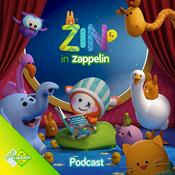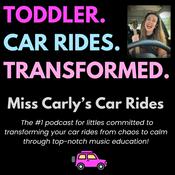Practical Research Parenting Podcast| evidence-based | raising children | positive parenting

33 afleveringen

PRP033 Child Sleep: The 3 main causes of child sleep problems in 10 minutes
17-5-2017 | 10 Min.
Show Notes: Child Sleep: The 3 main causes of child sleep problems Child sleep became an obsession for me back in my worst sleep-deprivation days. So I did what most PhD Psychology students would, I researched. Why do babies wake so often? Is it really necessary? When can I expect to get a run of 8 or even 5 hours sleep again? What can I do to speed that process? Then I began interviewing experts. Finally, it began to come together. I was able to cut through what I had learned to discover the 3 main causes of child sleep problems that really seem to underpin it all. Best of all, each of the three causes has fairly clear solutions. The thing is, every solution needs a level of perseverance, and solutions to one cause, do not help with the other two. The outcome: you need to find the cause and choose a fitting solution that you have the energy and will to stick to for at least a week. I built these causes and all the solutions I could find into the Sleep Options Wizard, presented them at local preschools, and now, I am sharing them with you. Summary The 3 main causes of sleep issues: Physical Biological Sleep Processes (Circadian Rhythm and Sleep Pressure) This is the first place to look! Medical issues Not addressed by the Sleep Options Wizard apart from night terrors, nightmares, sleep apnoea (look into this if your child snores), and head banging. Physical comfort - hunger, heat, wet, itchy. Solutions: Change timing of sleep, or physical environment (temperature, lighting, clothes) as appropriate. Ask a medical professional for medical issues. Emotional Fear, anxiety, excitement... Common triggers: Separation, processing daily emotions, loss of security, a major change, a recent or anticipated exciting game or event. Solutions: Start during the day (with empathy, emotion coaching, and the 3 Skills to Teach during the Day for better sleep at Night), then a gentle, gradual bedtime approach bed-time (for example, using the Sensible Sleep Solution), and only then overnight if necessary. Habitual Falling asleep habit/association e.g. co-sleeping, rocking to sleep, patting to sleep These habits are not problems - If you and your child are happy, continue and enjoy. Only a problem if: You don't enjoy it or have time for it. It causes night wakings where your child wants help back to sleep, and these are not allowing you the quality sleep you need. Boundary testing - Independent thought, preference, or action is a new skill that 3-5 year olds want to practice over and over (www.practicalresearchparenting.com/boundary). Solutions: Incorporate reasonable choices during the day and as part of the bedtime routine. Set and communicate clear expectations using Modelling for children 6 months and older (www.practicalresearchparenting.com/model). The Sleep Options Wizard is a guidance tool to help you diagnose the cause (in a bit more depth) and choose a solution. The solutions above are just a few of many gentle approaches. Links Sleep Options Wizard The first step in any good sleep intervention (Physical) video and email series. Podcast on Sleep Apnoea (Check this out if your child snores regularly). 3 Skills to Teach during the Day for better sleep at Night. Sensible Sleep Solution Boundary Testing Communicating expectations. Please subscribe, rate and share! Subscribe: iTunes, RSS, or Stitcher Please leave a review: in iTunes, and Stitcher Please share using the buttons below. Please leave a comment and start a discussion. Does this fit with your experience?

PRP032 Autonomy-Supportive Parenting Style Part 4
31-3-2017 | 39 Min.
Show Notes: Autonomy Supportive Parenting Style Part 4 This is the fourth and final part of the interview with Professor Genevieve Mageau. We talk about beliefs behind autonomy support, what hinders autonomy support, transitioning from a controlling to an autonomy supportive style, and the book and workshop series "How to Talk so Kids will Listen, and How to Listen so Kids will Talk". Listen to Autonomy Supportive Parenting Style Part 1, Part 2 and Part 3 first. I intend to start running a workshop series on How to Talk so Kids will Listen, and How to Listen so Kids will talk. If you are interested, sign up for the downloadable tip sheets in the meantime via the link above, and I will let you know when workshops start. Summary Beliefs behind Autonomy Support Organismic Trust makes it easier to take the child's perspective and take a supportive rather than coercive role. Trust that children will develop at their own pace. Trust that children want to co-operate. Trust that children want to learn. Think in terms of long term goals ("I want my child to learn to take responsibility for her things", rather than "I want this room clean NOW!") Inform of expectations. Give a chance to do better next time. Focus more on learning than performance. (Mistakes become learning opportunities, not failures.) Taking a child's perspective is key. Give relevant choices. Empathise. Consider preferences. Barriers to Autonomy Support High stress level. Worries for child's future. Daily hassles. Controlling behaviour can be rewarding. Authority figure. Taking action. Can reduce stress. Hinging our self-esteem on our children's success. Everyone has more controlling, and more autonomy supportive days. We can feel guilty for our bad days. We need to show ourselves the same compassion that we want to show our children. Changing towards an autonomy supportive parenting style Children with more difficulty learning/ behaving, are often the ones who most benefit from Autonomy Support. However, a sudden transition is unlikely to be successful. Children who are used to controlling parenting/teaching need more structure initially. Reflecting their feelings, showing that you get them, is especially important to develop the atmosphere of co-operation. Autonomy support helps children to develop values, rather than looking to the leader for direction. This becomes particularly important when, as adolescents they start looking more to their peers than their parents for guidance. How to Talk so Kids will Listen and How to Listen so Kids will Talk A book and workshop series that helps incorporate autonomy support into all areas of parenting. Including when children are distressed, or don't want to co-operate. It teaches 30 skills, 27 of which can be implemented from a very young age. The book was written by two parents, Adele Faber and Elaine Mazlish, in 1980. It was inspired by a parent workshop on empathic limit setting run by Psychologist Haim Ginott, author of Between Parent and Child, and the researcher who inspired today's definition of autonomy support. How to Talk so Kids will Listen and How to Listen so Kids will Talk is still the second most popular parenting book (affiliate link - thank you). It includes involvement and structure in an autonomy supportive way. There is also How to Talk so Teens will Listen and How to Listen so Teens will Talk, but the principles are essentially the same with different examples. About the workshops 7-week program of 2 hours per week workshop time. Workshops are very closely linked to the book. Each chapter and session: Starts with a perspective taking exercise. Skills are presented using comic strips. Practice skills in the workbook. Practice skills with other parents. Homework - practice with family. Are they effective? Geneviève Mageau and Mireille Joussemet are currently eva...

PRP031 Autonomy-Supportive Parenting Style Part 3
18-1-2017 | 27 Min.
Show Notes: Autonomy Supportive Parenting Style Part 3 This is the third part of the interview with Professor Genevieve Mageau. We talk about using routine charts, and some of the risks and alternatives to sticker charts. We also look at limit setting for boundary testing behaviour, and addressing frequent misbehaviour. Listen to Autonomy Supportive Parenting Style Part 1 and Part 2 first. Summary Routine Charts Routine charts can be helpful because they are informational. Consider your child's competence? Is s/he able to work through the routine independently. Do you need to remind your child to look at the next step? How much help does your child need to complete each step? If there are frequent problems, problem solve. Accept that when control is given to the child, there will be mistakes. Provide reasons why they need to complete the routine. Allow natural consequences. For example schedule some playtime at the end of routines. If the routine takes too long, there is less time for play. Be prepared to help your child cope with failure (empathise without fixing or blaming). Avoid rushing (make sure your expectations are realistic) - leave time for mistakes by waking earlier if you have to. Make sure children are capable of all steps. Sticker Charts Consist of 2 components: Informational competence feedback (can be motivating, but also has the potential to undermine feelings of competence, which can be demotivating) Controlling element When sticker charts are seen as encouraging and playful - sticker charts can have positive outcomes BUT, It is hard to predict how they will be perceived. Initially they may work well because they are exciting and provide clear information on what is done well. Some days they may be seen as an attempt at control, and incite resistance, e.g. after an argument, or in the context of other demands. The more parents emphasise the contingency of the reward, the more controlling it can feel "e.g. Come on, get dressed, don't you want your sticker today?" Can create a transactional parent-child relationship. Children have the right to refuse the reward to not do the behaviour. The focus is on external contingencies rather than the importance or meaning of the behaviour If the reward is blown if they fail once or twice in a week, there is no reason to keep trying for the rest of the week. Part of what differentiates sticker charts from to-do lists is that children feel really bad when they can't add a sticker. Sticker Chart alternative Describe the behaviour that is done right. E.g. "I see a child who came home, and took out his homework straight away. That is what I call taking responsibility". Describe what your child does well, rather than evaluating them. Avoid evaluations e.g. "Good girl/ boy". Limit-setting and boundary testing behaviour Create a climate of co-operation. Listen with compassion and respect. Punishment doesn't work. It undermines this climate. Describe the problem (without evaluation, blame, or accusation). State feelings without too much intensity. Offer different choices of acceptable behaviour. Take action to solve the problem. Trouble-shooting If this problem re-occurs frequently, use problem solving. If children are frequently misbehaving, look first at the climate of respect. Links How to talk so kids will listen and how to listen so kids will talk by Adele Faber and Elaine Mazlish (Affiliate Link, thank you). Faber and Mazlish Website: http://www.fabermazlish.com/ Patreon Support Page at https://www.patreon.com/PracticalResearchParenting where you can help me to continue these podcasts for you and millions of others. Leave a review on iTunes To download Tip Sheets from the book "How to Talk So Kids Will Listen..." please click here. This series

PRP030 Autonomy-Supportive Parenting Style Part 2
13-12-2016 | 38 Min.
Show Notes: Autonomy Supportive Parenting Style Part 2 This is the second episode talking with Professor Genevieve Mageau about Autonomy Supportive Parenting. In this episode we examine what to do when children won’t listen, how to address ongoing problems, more on providing structure, and enforcing limits in an autonomy supportive manner, and the difference between psychological and behavioural control. Listen to Autonomy Supportive Parenting Style Part 1 first. Summary What if our child is not listening? "I have found that when I engage with Alex's game, and then ask for his help, he tunes out as soon as I change the topic to cleaning up." Genevieve's advice was as follows: You do not have to listen forever. To help the message get through you can send a note (a fun way of getting attention), or get close, put a hand on his shoulder, and point. Pick your battles - decide how important picking up the shoes is to you. It is easier to accept rules that are easy to justify. Autonomy supportive communication first: Listen to perspective Acknowledge perspective Give reasons Provide age-appropriate choice (e.g. do you want to clean up now, or after the game?) Clearly state expectations. "We agreed that..." Express your feelings "I feel ... when..." Help them to achieve the goal. "How can I help you to..." e.g. "Would it help if I put on some music?" Provide structure - if you don't enforce your rules, why would they learn or stick to them? Focus on solving the problem, not punishing the child. For example... Gently guide. You may need to remove distraction until the goal is achieved. The goal is to solve the problem, not punish the child. Be proactive by deciding on rules in advance. For example do you want to clean up after each game? Every afternoon? Do parents know the policy? Do our children know the policy? Once you decide on a rule, communicate it (in an autonomy supportive way), then coach and remind. Invest time helping kids to learn the rules and learn problem solving. Ongoing or reoccurring problems Use collaborative problem solving when everyone is calm: Listen to your child's feelings about it. Express your feelings about it (and why you feel that way) without placing blame or accusing. Brainstorm and write down ideas without judgement (write them all down, no matter how impractical). Select different options - explore consequences and give explanation when crossing out options. Don't try to convince the kids that the rule is important - just providing information is sufficient. Behavioral control versus Psychological control When parents try to control psychological elements of their child, including thoughts, feelings, preferences, this leads to the most negative impact. It is important to allow children to explore disturbing thoughts and opinions, listen so it can pass. For example "I hate my little sister!" Don't deny it or try to convince them that it is not true. React emphatically, without judgement. You can try changing it a little: "Oh you are really angry at your sister" This may be met with a rebuttal, in which case you can acknowledge that feeling, and extrapolate the impact of it e.g. "Oh, you hate her, that must be difficult" Even with strong feelings we can put limits on the behavior. Use empathy, non-judgemental information, warmth towards both children. E.g. "I can see you are really angry at your sister. Sisters are not for hitting." Solve the problem. Make the behavior stop. For example, Remove an object (such as a pen that has been used to draw on a wall) until trust is restored. Separate children until trust is restored. The goal is not to punish, but to prevent the problematic behavior. Reflect the feelings of the victim and ask "What can we do to fix it?" with a curious, not accusing tone.

PRP029 Autonomy-Supportive Parenting Style Part 1
25-11-2016 | 30 Min.
[display-if-get name="HTTSKWL"] Thank you for signing up to hear about the "How to Talk so Kids will Listen" workshops. To get you started, if you haven't already, please listen to this series of podcasts discussing the autonomy supportive parenting style that you will learn through the workshops. [/display-if-get] Show Notes: Autonomy Supportive Parenting Style Part 1 3 key components of successful parenting are parental involvement and age-appropriate structure, provided in an autonomy-supportive way. These are central components of the authoritative parenting style, and also satisfy the basic needs for human motivation and flourishing as defined by the Self Determination Theory. Through this series of 4 podcast episodes Genevieve Mageau helps us to translate this theory of autonomy supportive parenting style into concrete skills that we can practice. Summary Optimal Parenting Components To flourish, to feel motivated, and self directed, people primarily need three conditions: 1. Relatedness (Also belonging, acceptance. warmth, connection) Relatedness refers to our need for belonging. Parental involvement in their children's lives in a caring and accepting way, with love and warmth, fosters positive connection, and satisfies children's need to belong. 2. Structure (A means of developing competence) Structure refers to clear rules and limits that parents are willing and able to enforce, high but realistic expectations, providing optimal challenges (which often involves providing support, or simplifying tasks for young children), and providing an environment that children have a reasonable degree of control over. 3. Autonomy Autonomy refers to the way in which we are involved, and provide structure in our children's lives. It is a position that respects the child's unique character, feelings, preferences, interests, and perspective. Autonomy support grants children agency and ownership over their own behaviour, and allows them to be themselves. It is the opposite of attempting to control our children, being intrusive, or trying to make them be a certain person. It is not the same as permissive. We talk a lot about autonomy supportive limit setting, and enforcing those limits. It is also not the same as independence, more about the development of healthy interdependence. How to have an Autonomy-Supportive Parenting Style. Key components are: Be empathetic, genuinely try to understand your child's perspective and feelings, truely listen and explore his point of view. Welcome all feelings, while setting limits on behaviour. (Anger is allowed, hitting is not). Be descriptive and informational in your comments, not evaluative. Focus your comments on the problem, rather than placing blame. E.g. "There are shoes all over the floor". Provide rationales. E.g. "We can trip on shoes and it can really hurt us." Support active participation. Actively listen to your children. Involve children in decisions and problem solving, Provide capacity-appropriate choices. Autonomy support for pre-verbal children Even with babies we can make controlling or autonomy supportive actions. Controlling behaviour is putting a toy right in the babies face such that she has to look at it, an autonomy supportive approach would be to play with the toy in view but just to the side, so that the baby can choose to look at it. Similarly you can force a toy into a young baby's hand or offer it to him. In addition you can... Provide age appropriate choices (not do you want to brush your teeth, but teeth first? Or bath first?) Allow your child their own way of doing things (often this is the slow way). Empathise (allow, and accept all feelings). Respect toddlers preferences (within reason). Give reasons for your requests and actions. Establish routine - the ability to predict events provides a sense of control. State rules and expectations without judgement.
Meer Kind en gezin podcasts
Trending Kind en gezin -podcasts
Over Practical Research Parenting Podcast| evidence-based | raising children | positive parenting
Luister naar Practical Research Parenting Podcast| evidence-based | raising children | positive parenting, Ik Ken Iemand Die en vele andere podcasts van over de hele wereld met de radio.net-app

Ontvang de gratis radio.net app
- Zenders en podcasts om te bookmarken
- Streamen via Wi-Fi of Bluetooth
- Ondersteunt Carplay & Android Auto
- Veel andere app-functies
Ontvang de gratis radio.net app
- Zenders en podcasts om te bookmarken
- Streamen via Wi-Fi of Bluetooth
- Ondersteunt Carplay & Android Auto
- Veel andere app-functies


Practical Research Parenting Podcast| evidence-based | raising children | positive parenting
download de app,
luisteren.


































